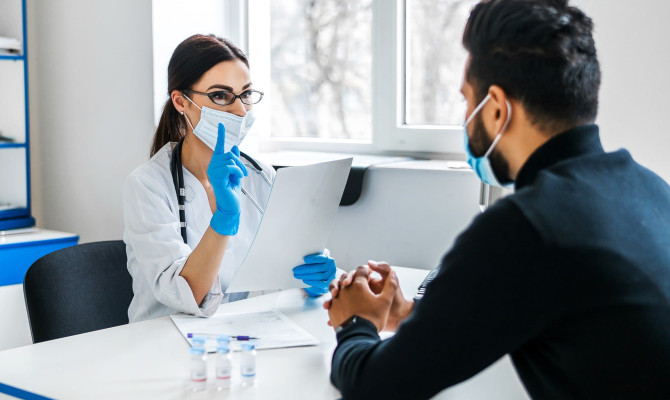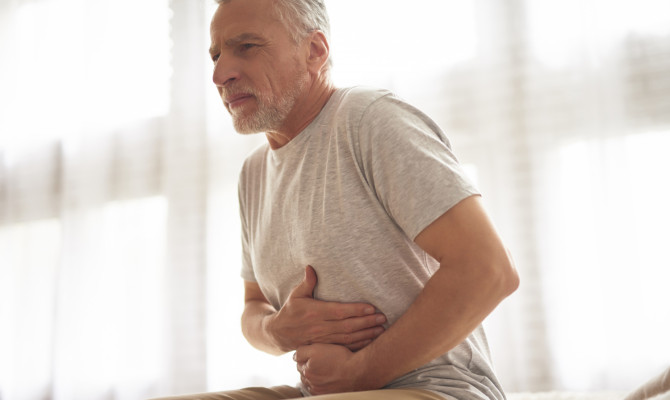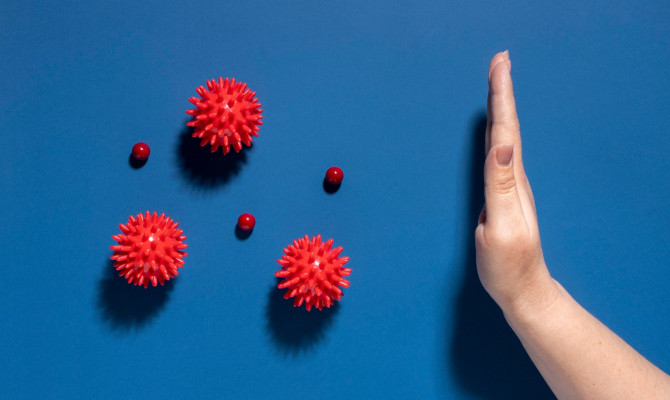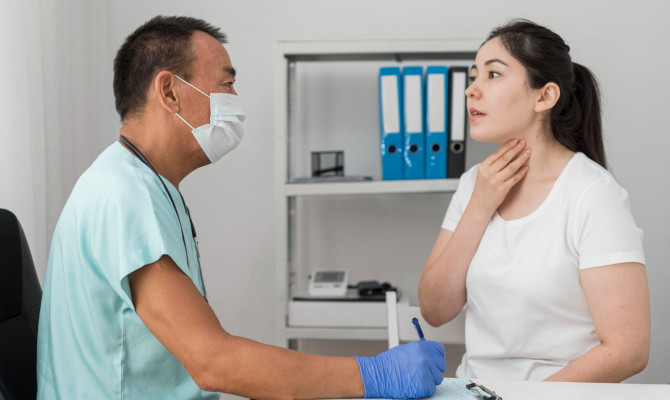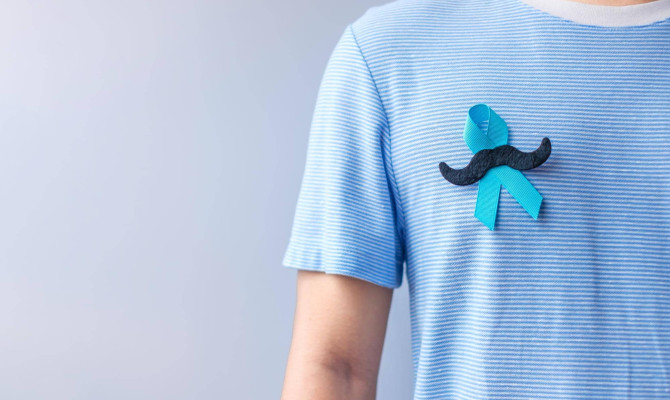About Excessive Sweating: Causes, Symptoms Triggers and Prevention

- Excessive sweating
- 22 Aug 2023
Overview
About Excessive Sweating
Sweating excessively is widespread. It can affect the entire body or sometimes just particular regions. Although there are actions people can follow and therapies can assist, also sometimes it gets better with age.
Sweating is expected when the person is feeling hot or is exercising, but if they are sweating when the body does not need cooling off, they may be sweating excessively. Sweating excessively might occur for no apparent reason, as a complication of another medical condition a person may have, or as a negative side effect of a medication, the person is taking.2Overview| Researched based study from Nlm.nih.gov

Types
Types of Excessive Sweating
Excessive perspiration comes in two types:
- Focal Excessive Sweating or Focal hyperhidrosis
- Generalized Excessive Sweating or Focal hyperhidrosis1Types| Researched based study from Healthdirect.gov.au
Focal Excessive Sweating
- Focal hyperhidrosis is characterized by excessive perspiration in certain body parts, typically the face, hands, feet, or armpits, with no discernible cause.
Generalized Excessive Sweating
- Generalized hyperhidrosis is an all-over excessive sweating condition that is typically brought on by a medical condition.
Causes
What Causes Excessive Sweating?
Idiopathic
- One of the commonest cause of excessive sweating in humans is idiopathic hyperhidrosis. Even in the absence of heat or physical exertion, it is possible for the nerves that normally causes perspiration to become overactive and activate the sweat glands.
Genetics
- Such hyperhidrosis frequently runs in families. If a person is anxious or stressed out, it can get worse. The armpits are the area that is most frequently affected, followed by the palms and feet, and lastly, the face.
Health problems
Some people’s excessive perspiration is brought on by a health issue. There are few medical conditions that should be ruled out:1Causes| Researched based study from Healthdirect.gov.au
- Menopause
- Diabetes
- Heart attack
- Infections
- Low blood pressure
- Few types of cancers
- Nervous system disorders
- Thyroid
Triggers
Triggers for Excessive Sweating
To stay cool and avoid being too hot, the body produces perspiration.
Our environment may contain some factors that stimulate your sweat glands to create more perspiration, such as:
- Specific feelings of tension, fear, anxiety, or anxiousness.
- Humid or warm temperature.
- Physical exercise or activity.
- A few foods and drinks, such as fatty, salty, sweet, and spicy foods as well as foods high in protein. Caffeinated drinks (like coffee) and alcoholic beverages are examples of beverages.
Symptoms
Signs and Symptoms of Excessive Sweating
When a person has excessive sweating they may experience the following:
- Moisture on their skin
- Moist clothes
- Droplets of liquid dripping from the forehead or cheeks 3Symptoms| Researched based study from Nlm.nih.gov
The following signs of hyperhidrosis can develop over time:
- Sweat causing skin irritation can cause itching and inflammation.
- When sweat particles and skin germs combine, body odor results.3Symptoms| Researched based study from Nlm.nih.gov
- The skin on the foot is peeling or cracked.
Diagnosis
What Are the Different Diagnostic Tests Available to Diagnose Excessive Sweating?
The Starch-Iodine Test
- In the starch iodine test the doctor applies an iodine solution to the sweating region. Later covers it with starch. The solution turns dark blue in areas where there is sweat excessively.
Paper Test
- In this test the doctor will apply a specific paper to the affected area. The doctor will weigh the paper to calculate the amount of perspiration the person has.
Blood Test
- Tests that take a blood sample or employ imaging technology can reveal more information about the reasons for the symptoms by taking images or a blood sample.
Differential Diagnosis of Excessive Sweating
The differential diagnosis of excessive sweating is as follows:
- Pheochromocytoma
- Menopause
- Lymphoma
- Tuberculosis
- Alcohol use disorder
- Thyrotoxicosis
- Neuropathy
- Hypoglycemia3Diagnosis| Researched based study from Nlm.nih.gov
Prevention
Ways to Prevent Excessive Sweating
The best course of action for treating hyperhidrosis depends on the area of the body that is afflicted, the severity of the condition, and personal preferences. One can control the symptoms by choosing the most effective treatments with the assistance of a dermatologist or other healthcare professional. There is not a single type of treatment that is effective for everyone.
Remedies to prevent Excessive Sweating are:
Use Deodorants and Antiperspirants
- Using antiperspirants stops sweat production by blocking the sweat glands. Certain over-the-counter (OTC) may be suggested by a healthcare professional. An aluminum-based deodorant works well for people who have excessive sweating.4Prevention| Researched based study from Sciencedirect.com
Taking More Frequent Showers or Baths
- Modifying the daily schedule, such as taking more frequent showers, may help with mild symptoms.
Wearing Breathable Clothes
- One might feel better at ease wearing fabrics like cotton that are more breathable and absorbent. Materials like polyester and mixed textiles can trap heat and increase perspiration.
Treatment
Therapies to treat Excessive Sweating
Iontophoresis
- In iontophoresis the person will be asked to submerge their hands and feet in a small tub of running water. Sweat glands are slowly blocked by a unique gadget which releases a weak electrical current throughout the water. It takes around 10 to 20 minutes to complete one treatment.
Botox Injection
- Injections of Botox (botulinum toxin) can stop sweating for months at a time if it is injected into an overactive nerve. Recurring treatments are required.
Microwave Therapy
- The healthcare professional applies a cutting-edge tool to the area of the skin that is afflicted. The sweat glands are then irreversibly destroyed by the device’s thermal energy emissions. This operation takes place in a doctor’s office and lasts for an hour.1Treatment| Researched based study from Healthdirect.gov.au
Tips
Tips that Can Help With Excessive Sweating
Do’s
- Reduce perspiration by wearing loose-fitting clothing.
- Wear moisture-wicking socks, and if at all feasible, switch them out at least twice daily.
- Wear leather shoes, and attempt to switch up the footwear every day.
Don’ts
- Avoid wearing tight clothing or synthetic textiles, such as nylon.
- Avoid sporting enclosed boots or sports shoes because they could make the feet sweat more.
- Avoid engaging in activities that could exacerbate perspiration, such as consuming alcohol or eating spicy food.
Complications
Complications of Excessive Sweating
Although excessive sweating does not always harm our health, it can lower our quality of life.
- It can make many persons with this illness unhappy, depressed, anxious, or ashamed.
- It may have an impact on a person’s social life, employment, relationship, and sense of confidence.1Complications| Researched based study from Healthdirect.gov.au
- If one typically wears black to hide sweat stains, people could feel as though their options in clothing are limited.
- Additionally, it may cause discomfort in the body and consequences including eczema and skin diseases.
The doctor will evaluate the person and possibly perform some tests to rule out a medical explanation for the excessive sweating before diagnosing hyperhidrosis.
Prognosis
Prognosis
- The outlook for hyperhidrosis is uncertain. It is not life-threatening but it can be unsightly and potentially cause problems at work.
- Patients with severe hyperhidrosis have a terrible quality of life. All currently known therapeutic methods frequently result in the recurrence of hyperhidrosis, and no treatment is consistently effective. Though they do not always result in a cure, more recent surgical procedures provide a cure.
Takeaway
Takeaway
If a person has excessive sweating, then it is crucial to keep the affected regions as dry and clean as possible. Absorbent pads help to prevent sweat from seeping through the clothes. Choose natural fibers that allow the skin to breathe, such as silk or cotton, and always carry a spare set of clothes. It is very important to drink enough water and keep yourself hydrated to overcome the loss of water in the body due to sweating. Wearing gloves may aid with daily duties if the palms are affected by sweating.
Any feedback on this article?
 This Articles content was accurate
This Articles content was accurate Very Informative Article
Very Informative Article I have a question or a comment
I have a question or a comment
 This article contains inaccurate content
This article contains inaccurate content This article was not helpful
This article was not helpful I have a question or a comment
I have a question or a comment
We appreciate your helpful feedback!
Checkout our social pages
References
-
Health Direct
Excessive Sweating | Causes | Complications | Treatment
-
National Library of Medicine
Hyperhidrosis | Overview
-
National Library of Medicine
Hyperhidrosis | Prognosis | Differential Diagnosis | Symptoms
-
Science Direct
Sweating Disorders | Prevention












